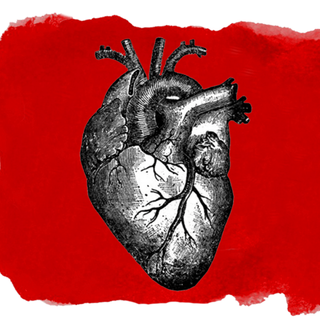
Not All Narcissists Are Arrogant, Some Are Vulnerable Too, Research Shows
Grandiose and vulnerable narcissists differ in terms of how they relate to their desires around social inclusion and status.

A new study in the Personality and Social Psychology Bulletin helps researchers understand the full spectrum of what narcissism entails, and it includes more than what was previously believed about the trait. Indeed, narcissism itself is widely considered to be a spectrum that ends in a psychological disorder classification, but a hallmark feature of it is excessive self-centeredness. While dominant conceptions and pop culture portrayals have tended to focus on a Dorian Gray-esque archetype — the self consumed, vain, socially charismatic and confident person who is infatuated with themselves — another, lesser known type exists.
The ‘vulnerable’ narcissist, in contrast to their more popular ‘grandiose’ counterpart, is a person who is driven by low self-esteem where the other is driven by high self-esteem; is withdrawn where the other is assertive. “Grandiose narcissism is bold, extraverted, and immodest, whereas vulnerable narcissism is withdrawn, neurotic, and insecure,” the study notes.
Both, however, are characterized by entitlement to “special treatment and privileges,” as Nikhila Mahadevan, author of the study, writes in The Conversation. And while narcissism, both vulnerable and grandiose, refers to an inflated entitlement, an antagonistic perception of others and, most importantly, a desire for social status, the new study finds that the two can be distinguished on the basis of how they perceive their own status and inclusion.
The findings throw a wedge in all popular conceptions of what narcissists look and behave like on the outside, and add new dimensions to understanding and identifying them by what motivates and drives them internally instead.
The research involved two studies, and included 676 adult participants from the United States. Their behaviour was observed in terms of social status and inclusion — two primary drivers of human motivation — in order to observe how different types of narcissists responded to each driver. Social status refers to how respected and admired an individual is, and social inclusion is how well liked they are. “Status is agentic—it involves getting ahead—whereas inclusion is communal—it involves getting along,” the study explains.
In a nutshell: grandiose narcissists desire social status and believe they have achieved it, and they don’t desire or aspire to achieve social inclusion. Vulnerable narcissists on the other hand, desire both and feel like they haven’t achieved either.
“While grandiose narcissists may be stars on the interpersonal stage, triumphantly capturing the spotlight, their vulnerable counterpart may be a bit player lurking on the sidelines, resentfully seeking, but failing to obtain, the applause they crave,” Mahadevan writes.
Related on The Swaddle:
Narcissism Is a Diagnosable Illness, Not Just a Cultural Supervillain Trope
The study has important implications for the general understanding of what motivates narcissists, and how they relate to others. A darker side of why the issue is important is that studies have shown a correlation between narcissism and being abusive in relationships. Indeed, many abusive relationships are characterized by a person seeking to control and manipulate another person based on their entitlement over them, and their centering of their own needs at the expense of another’s. Understanding how narcissism works and deconstructing what it can look like could potentially, therefore, be helpful in this context, perhaps even lifesaving.
Experts warn, however, that conflating narcissistic traits with Narcissistic Personality Disorder could be dangerous. While narcissism is a spectrum and most people may be on it to some degree, it is important to not use the term loosely. In fact, a little narcissism may even be good for us. While new study broadens our understanding of what narcissism means, it also demonstrates how it is through motivations, rather than outward behaviour, that we can understand and perhaps identify narcissism better. “Not all narcissists care about looks or fame or money… if you focus too much on the stereotype, you’ll miss red flags that have nothing to do with vanity or greed,” said Craig Malkin, a psychologist at Harvard Medical School.
Depending on how you look at it, the good or bad news is that narcissism isn’t only linked to an innate characteristic that people are born with — it could also be cultural. Many experts are of the opinion that we are now living with a narcissism ‘epidemic’. An overwhelming privileging of wealth, success, and fame in modern, post-industrial societies may have contributed to this. The good news, then, is that perhaps we may be better placed to identify and work on narcissistic tendencies in ourselves, given this context. Whether this self-awareness is really achievable, or whether it stands in contrast to what narcissism represents, remains to be seen.
Rohitha Naraharisetty is a Senior Associate Editor at The Swaddle. She writes about the intersection of gender, caste, social movements, and pop culture. She can be found on Instagram at @rohitha_97 or on Twitter at @romimacaronii.
Related


It’s No Mystery That Superstition Is Behind India’s High Snakebite Deaths
